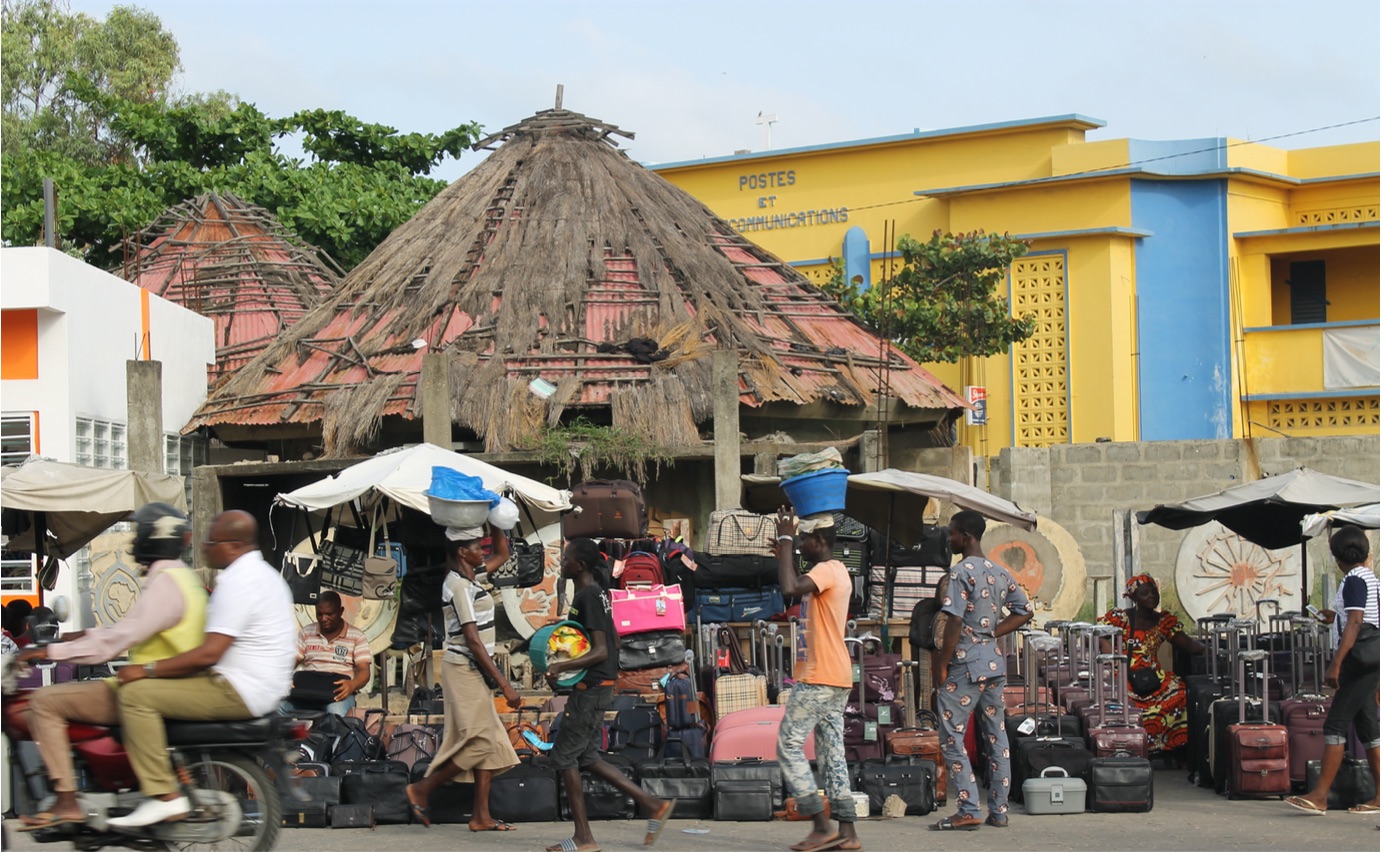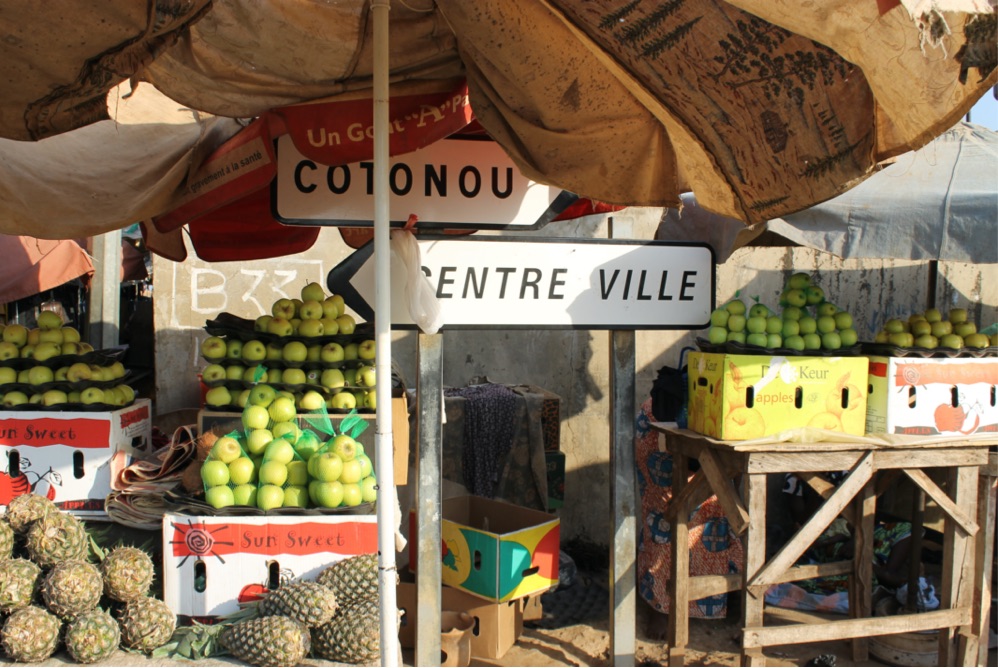“The single story creates stereotypes, and the problem with stereotypes is not that they are untrue, but that they are incomplete. They make one story become the only story.” Chimamanda Ngozi Adichie
Tales from the Lagos-Abidjan Corridor
The Lagos-Abidjan corridor is one of the fastest-growing urban areas in Africa. It is also a migration route that connects mega-cities, peri-urban sprawl, market towns, and villages. For many people residing along the corridor, there are numerous opportunities to be had by jumping on a packed bus, crossing a land border, and tracking down local contacts.
Everyday mobility along the Lagos-Abidjan corridor is a far cry from the tired tropes of African migration. Such tropes often feature trafficking, illegal migration, and perilous crossings of the Sahara and Mediterranean. This isn’t the full story—, in fact, it’s just a tiny part of it, as most migration in West Africa is regional. Indeed, the International Organisation for Migration (2015) reports that regional flows account for 84% of movements within West Africa. There is a false but predominant assumption that all sub-Saharan migrants are heading to Europe; one way to counter this is through telling more balanced stories about trans-local and regional migration.
Since 2016 I have been partnering with the Global Programme for Migration and Development at the Swiss Development Cooperation as part of a trans-disciplinary research project on urban migration in West Africa. As we came to the end of our collaboration, our attention focused on the diffusion of our insights and results. During one workshop we shifted through the data, statistics, maps, interviews, policy analysis, and listed the various project outputs. There would be my doctoral dissertation (Hertzog, 2020), some papers, book chapters, and policy reports. Then someone in the room said, “stories, that’s what we need, stories.” Good migration policy, they argued, is reliant on a solid evidence base that is underpinned by narrative, allowing for a shared understanding of what everyday regional mobility in West Africa entails.
Remote Production
This is what led us, in the midst of the pandemic, to produce a web doc remotely and assemble a strong creative and technical team working over three different continents. The concept was straightforward; we would interview people in the Benin Republic about their migration journeys along the Lagos-Abidjan corridor. We cast migrant entrepreneurs and street vendors, Lebanese businessmen, social entrepreneurs, and border currency traders — a diverse portrait of migrant life along the corridor. We complemented this with various zoom interviews with development practitioners, academics, and experts, along with a selection of short and accessible texts and maps.
Reaching out to old contacts, I reactivated networks of past collaborators in Benin over WhatsApp, doing my best to explain what we were up to. I drafted interview guidelines for the film crew on the ground, reviewed footage as it came back, transcribed and edited round after round. When the cameraman asked one migrant vendor “What do Nigerians bring to the Benin Republic?” I was hoping for a punchy quote on migrant contributions to development, but instead, he listed the consumer products that they import. Nonetheless, we managed to edit the shots down to five-minute snippets, with good visuals and concisely articulated ideas. Quite a different game to classic ethnographic fieldwork.

Scenes of everyday migration, suitcase traders in Cotonou, Benin Republic. Credit: Alice Hertzog
An Instrument for Policy Dialogue
The web doc as a format has certain advantages for diffusing research results in transdisciplinary projects. It is highly accessible, especially for practitioners with little time to dedicate to reading research results. It also differs from traditional ethnographic footage, which is often lengthy and difficult to embed within a workshop or discussion. Instead, the format of the web doc lends itself to being embedded into policy dialogues, shown in workshops, or online seminars. Importantly, it is non-linear so the various elements, or stories, that make up the web doc can be viewed separately, or as standalone pieces, shown in a particular order, or even scrolled through randomly.
In the case of our web doc, each of the 21 standalone clips is around five minutes long. When being presented to policymakers, only the relevant clips which resonate with the topic under discussion need to be presented. Like other online media content, the message conveyed can be adapted and tailored to the audience. For example, in front of an audience of education experts, it would make sense to show clips discussing Nigerian students moving to Benin to study or the role of the diaspora in knowledge transfers. This format works hand in hand with mainstreaming migration into other development sectors by making migrant stories relevant for those not strictly working on migration.
Composite Migrant Narratives
Various topics cut across the stories we compiled – for example, remittance, housing, work, love, or currency fluctuations. This makes it possible to assemble various migrant stories in order to produce a fuller and differentiated portrayal of regional mobility in West Africa. Our intention here is to avoid what the Nigerian author Chimamanda Ngozi Adichie (2009) calls, “the danger of a single story.” When it comes to Africa, Adichie argues, this is often a patronizing single story of catastrophe.
The stories we produced show migrants making informed decisions, living complex, urban lives, and engaging fully with the globalized, digitalized world they inhabit. One recurrent topic was the role of technology in navigating migration and maintaining trans-local livelihoods. Migrants told us how they used the net to scout and research opportunities before setting out. For example, Sydney, who as a young man traveled from Cotonou to Abidjan to work in the music industry, as a promoter and manager for rap artists.
West African migrants are just as connected as anyone else today. Take Michael, a migrant Igbo trader from Nigeria working in Benin. He trades second-hand clothes, imported from Europe, and spends time scrolling through Instagram, making sure that the goods he selects align with global fashion trends. Whilst some consume content online, others are actively producing digital content. For example, in the case of Sam, a volunteer cartographer with Open Street Maps, whose work mapping border zones and checkpoints along the corridor, is seeking to provide better information for migrants and compensate for the lack of basic coverage by bigger players like Google Maps.
These stories reflect the role played by the rapid and vast penetration of mobile phones, that enable migrants to access online banking services and remain closely connected to their places of origin. One of the characters, Maimouna, a member of the Nigerien diaspora, explains how this has shifted the power dynamics between migrants and families left behind. She speaks about how messaging technology, notably Whatsapp, has made it harder for those receiving remittances in Niger to reallocate funds.
There are cases where people worked for years to save money that they then sent home. They would entrust their relatives back home with their savings but when they returned, they couldn’t find the house they had been promised was being built for them. This wouldn’t happen today. Now with mobile phones, you have a paper trail, proof that you sent the money, that the transaction was made. If you decide you want to build a house back home, you can follow the construction as it progresses. Today people find it easier to send their money because they know the transaction cannot be diverted.
Young traders using Instagram, volunteers mapping border posts on their iPhones, migrants checking their villa is being built to the right standard over WhatsApp, – these stories show a much more diverse portrait of African migration than desperate refugees fleeing Africa on a dinghy boat. Our intention now is to continue using the web doc, both as a teaching tool and within the contexts of policy discussions, in the hope that the material shown will trigger debate and dialogue.
Less Fieldwork, More Screen Time?
In many of the professional settings where migrant policy is under discussion, it’s rare to directly hear the voices of those concerned. All too often, development practitioners learn about migration through policy reports and executive summaries. The lived experiences, shared humanity, along with migrants’ moments of frustration and joy, are scrubbed out to make space for well-produced analysis and recommendations.
Whilst the migrant journeys we present in the web doc are edited polished extracts, they do create an immediate appreciation of how migration is experienced along the corridor. It might not be the same as sitting down and having a conversation with a West African migrant, but it’s a step closer. In times of pandemic, when development practitioners and anthropologists are stuck in their offices rather than out in the field talking to people, maybe yet more screen time is part of the solution.

The Lagos Abidjan Corridor is one of the many regional migration routes. Credit: Alice Hertzog
References
Ngozi Adichie, Chimamanda .”The Danger of a Single Story” TedGlobal, 2009. https://www.ted.com/talks/chimamanda_ngozi_adichie_the_danger_of_a_single_story
ICMPD and IOM. “A Survey on Migration Policies in West Africa.” Vienna & Dakar, 2015.
Hertzog, Alice. “The Lagos-Abidjan Corridor – Migration Driven Urbanisation in West Africa.” ETH, 2020. https://doi.org/10.3929/ethz-b-000478236.
